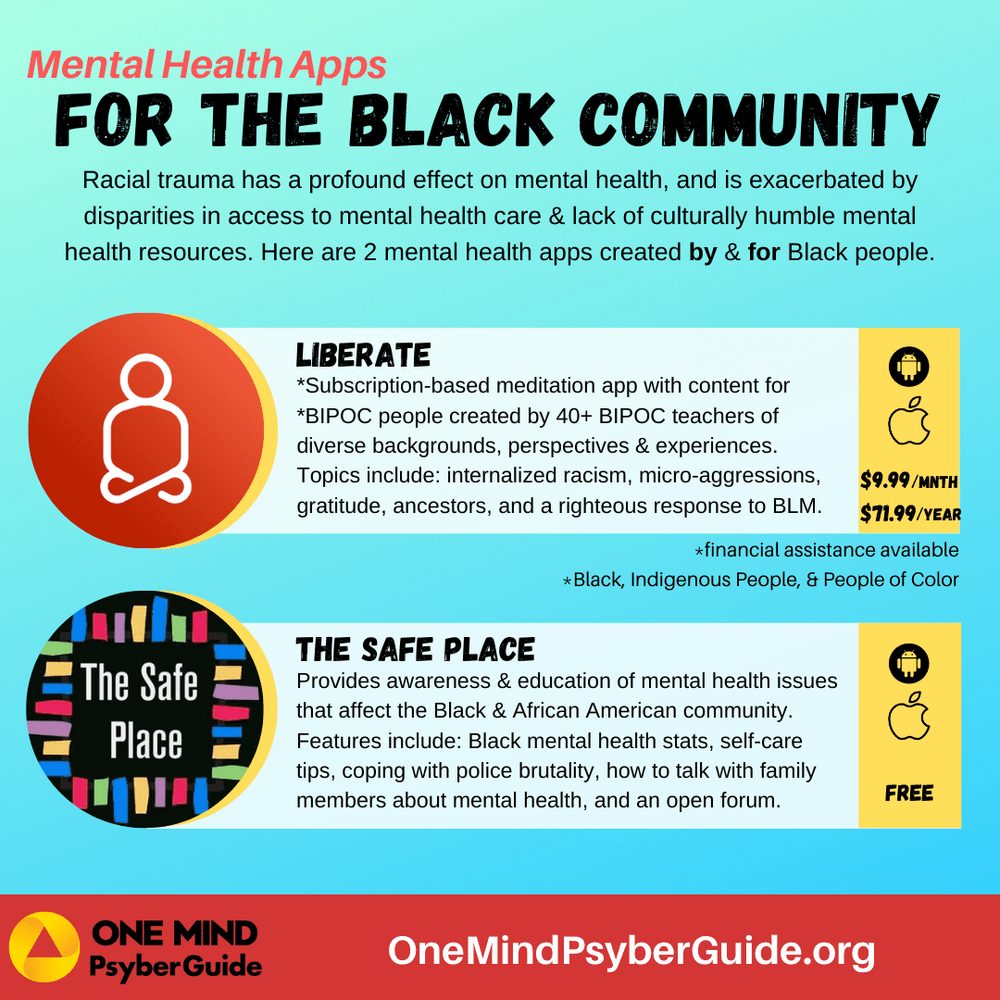January 2025 - Mental Health Apps Created by and for Black People

Liberate Meditation is a subscription-based meditation app that includes practices and talks designed for the Black, Indigenous People of Color (BIPOC) community. The app is designed to support BIPOC on their path to healing by naming and offering resources for common cultural experiences, like internalized racism and microaggressions. You can read One Mind PsyberGuide’s review here.
The Safe Place is a mental health app that teaches the Black community more about mental health from a minority standpoint. The app can also be used as a tool by mental health professionals of all colors to understand their Black patients better. You can read One Mind PsyberGuide’s review here.


